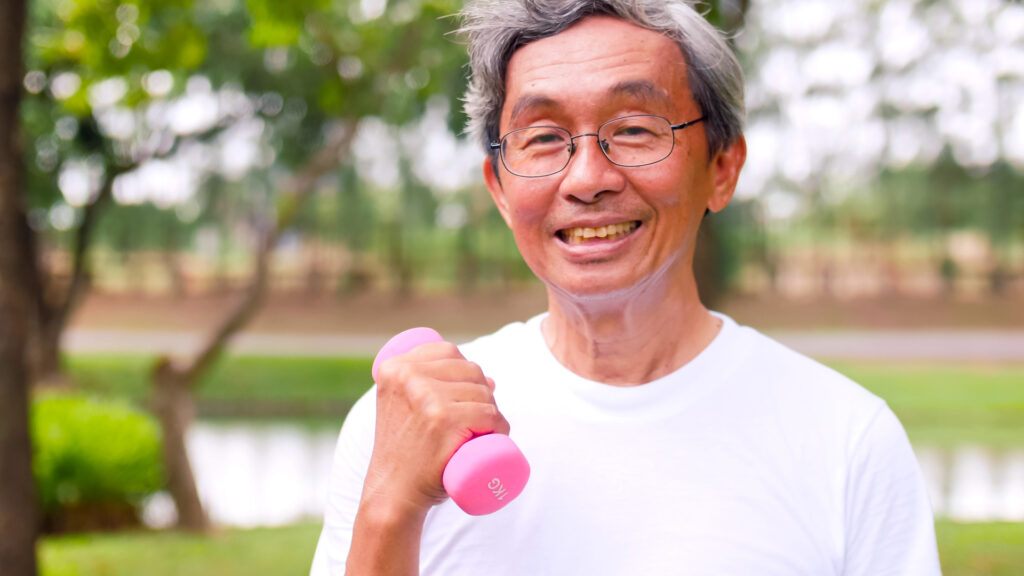Not all exercise has the same effect. Some exercises raise blood pressure, some exercises lower it. A few do both, depending on how you do them. Here’s how it works.
Exercises That Raise Blood Pressure
These exercises raise blood pressure during the activity. The spike is short, but strong. If your blood pressure is already high, use caution.
Heavy weightlifting
Lifting heavy loads makes you hold your breath and strain. This increases pressure inside your chest. Blood flow drops for a moment. The heart pushes harder. Blood pressure spikes. It can rise to dangerous levels, especially if you lift with poor form or don’t breathe properly.
Sprinting and explosive movements
Sprints, jumps, or short intense efforts force your heart to work fast. Your pressure rises quickly to meet the demand. This is a normal response. But for people with high blood pressure, it can be too much.
Exercises That Raise and Lower Blood Pressure
Some exercises cause a temporary spike. But over time, they may lower your resting blood pressure. The long-term benefits depend on how you do them.
High-Intensity Interval Training (HIIT)
HIIT combines short bursts of hard effort with rest. It raises pressure sharply during the intense part. But over weeks, HIIT can improve how your blood vessels respond. It can make your heart more efficient. This can lower resting blood pressure.
To do it safely:
- Start with short intervals (20–30 seconds of effort).
- Use a heart rate monitor.
- Let your heart rate drop during the rest period.
- Try low-impact options, like cycling or elliptical.
- Do it 2–3 times a week.
Skip HIIT if your blood pressure is very high or not well controlled.
Isometric exercises
These are static holds like wall sits or planks. They raise pressure during the hold. Your muscles squeeze the blood vessels. But research shows that regular isometric training, when done right, can lower resting blood pressure.
To do it safely:
- Hold each position for 30–60 seconds.
- Don’t hold your breath. Exhale slowly.
- Rest between sets.
- Start with 2–3 times per week.
These are not cardio, but they improve vascular control.
Exercises That Lower Blood Pressure
These exercises help most. They work by training the heart and calming the nervous system. The goal is to keep your heart rate between 50% and 70% of your max heart rate.
Your max heart rate is about 220 minus your age.
Example:
A 50-year-old man has a max of 170.
His target zone is 85–119 beats per minute.
In this zone, your body uses oxygen efficiently. Your blood vessels open. Stress hormones drop. The heart gets stronger. This lowers blood pressure over time.
The hypotensive effect (drop in blood pressure) happens after the workout. It can last 4 to 24 hours. If you exercise regularly, the effect builds. Your resting pressure stays lower.
Most people feel the difference in a few weeks. Some feel it after one session.
Best exercises to stay in this zone:
Brisk walking
30–45 minutes a day. Easy to do. Very effective.
Cycling
Use a steady pace. Keep breathing steady. Indoor or outdoor both work.
Swimming
Low impact and full-body. Helps if you have joint pain.
Rowing
Builds stamina and strength. Keep it light to moderate.
Dancing
Zumba, ballroom, or any steady-paced style. Fun and heart-friendly.
Light strength training
Use light weights, more reps. Don’t hold your breath. Lift with control.
Hiking or uphill walking
Keeps your heart working. Builds leg strength too.
Tai Chi or slow-flow yoga
Reduces stress. Helps balance and flexibility. Supports blood pressure control.
Bonus: How to Build Muscle and Lower Blood Pressure
The above answers the question, does exercise lower blood pressure. But there is a bonus for you. You can build muscle and still lower your blood pressure. The key is how you train.
Avoid lifting heavy weights for low reps. That spikes blood pressure.
Instead:
- Use light to moderate weights.
- Do 8–15 reps per set.
- Focus on slow, controlled movements.
- Exhale as you lift. Inhale as you lower.
- Rest 30–60 seconds between sets.
Train all major muscle groups 2–3 times per week. Include cardio on non-lifting days. Stay consistent. This approach builds lean muscle. It supports blood pressure control. It also improves insulin sensitivity and burns fat. Does exercise lower blood pressure? Oh yes, if done right.
Sources
HonorHealth.com: The six best exercises to control high blood pressure
Mayo Clinic: Isometric exercise and blood pressure


